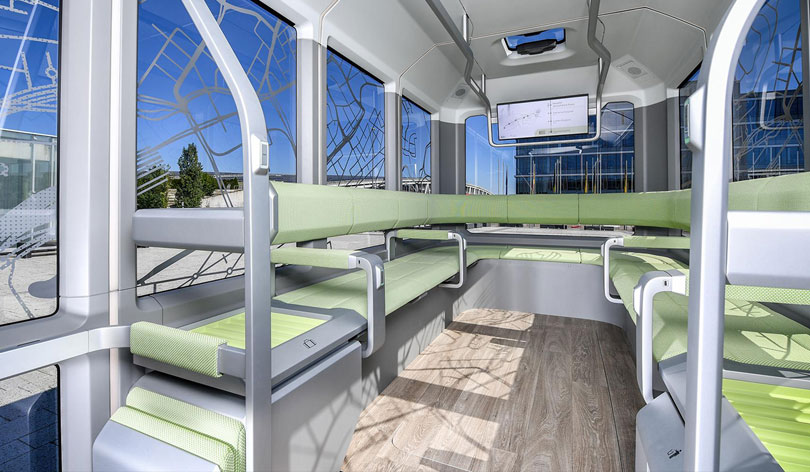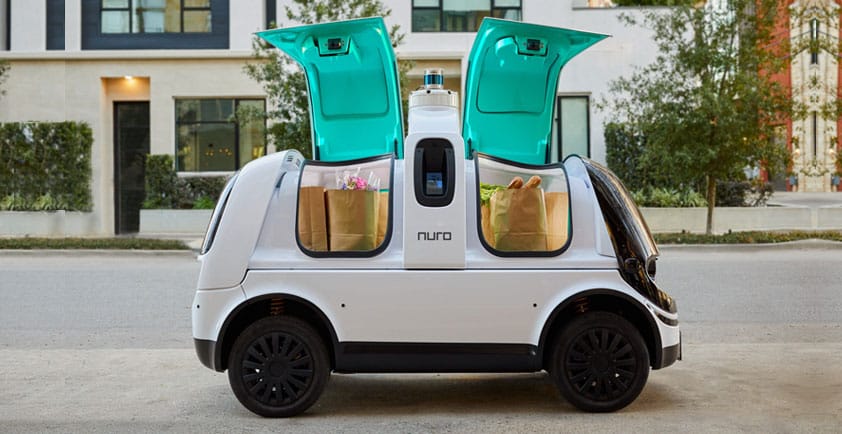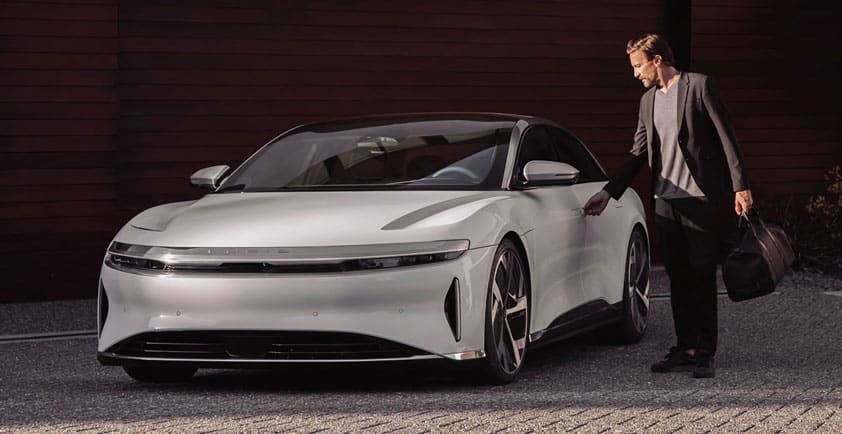

THE FIRST PROTOTYPE OF THE FUTURISTIC U-SHIFT VEHICLE CONCEPT MAKES ITS DEBUT
The German Aerospace Center (Deutsches Zentrum für Luft und Raumfahrt; DLR) is breathing new life into future urban mobility and logistics with its futuristic U-shift vehicle concept. The vehicle has a wide range of applications as an on-demand shuttle, a high-tech on-call bus, a versatile distribution centre for goods and parcels, or as a mobile sales vehicle. A research consortium led by DLR presented the first operable prototype at the Interim Conference of the Strategic Dialogue for the Automotive Sector in Baden-Württemberg in Stuttgart. The project has received around 12 million euro in funding from the Baden-Württemberg Ministry for Economic Affairs, Labour and Housing.
Modular design: combined driveboard and capsule
The capsule-shaped structures for transporting people or goods. The U-shaped drive unit contains all of the valuable technical components and systems needed for autonomous, electric and quiet travel. For maximum cost effectiveness, the driveboard is designed to operate round the clock when necessary. The capsules, which are much more economical to manufacture, can be used for a variety of purposes.
"We want to make tomorrow’s mobility more sustainable, effective and convenient," explains Nicole Hoffmeister-Kraut, Baden-Württemberg Minister for Economic Affairs. "Entirely new products and business models can emerge from futuristic innovations such as the U-Shift vehicle concept. It is essential that we support our small and medium-sized enterprises in Baden-Württemberg during the automotive industry’s transformation process and help them find a new role in the field of future vehicle concepts and mobility solutions. The modular approach opens up a lot of opportunities in this area."


"With the modular U-Shift concept, we are taking significant steps towards the mobility transformation," says Karsten Lemmer, DLR Executive Board Member for Energy and Transport. "Prototypes are extremely important, especially for the adoption of innovative concepts by the automotive industry, or logistics and mobility service providers. They allow researchers and future users to truly experience and help to improve the mobile world of tomorrow."
Testing, discussing, optimising: prototype ushers in the next developmental phases
The U-Shift prototype is comparable in size to a large van. The driveboard is currently remote-controlled and will in future be able to travel completely autonomously. Safety is a key aspect in the development of the concept. The passenger capsule has seven seats, as well as an extra folding seat. A large door with an integrated ramp ensures barrier-free access. The cargo capsule has space for four Euro pallets or eight barred rolling cabinets.


With the help of the prototype, researchers are hoping to acquire initial experience in using the system that picks up and sets down the capsules and are in close talks with potential manufacturers and operators. At the same time, they are conducting intensive discussions with citizens to determine their needs and wishes for scenarios in which U-Shift might be used, and about the future jobs that might be associated with such use. With their input, the researchers are continuing to develop the vehicle concept. For instance, it is important to test the interfaces between people and the vehicle, including the door-opening mechanism, the flow of information, as well as any access restrictions. The next big step is to increase the performance of the drivetrain, install hardware and sensors for automated and networked driving, test a new battery system, and further develop the chassis and lifting device.
A second, fully automated prototype capable of reaching speeds up to approximately 60 kilometres per hour is planned for 2024. In the process, the U-Shift team is looking to examine innovative business areas relating to new mobility services and reshape existing business sectors, for instance by conducting pilot tests with logistics companies.
DLR's U-Shift project partners
As part of the U-shift project, the DLR Institute of Vehicle Concepts has partnered with the Stuttgart Research Institute of Automotive Engineering and Vehicle Engines (FKFS), which is developing the drive train, and the Institute of Vehicle System Technology (FAST) and Institute for Information Processing Technology (ITIV) at the Karlsruhe Institute of Technology (KIT), which have contributed the chassis and the electrical and electronic architecture. The Institute of Measurement, Control and Microtechnology (MRM) at Ulm University is responsible for the automation.
About the Strategic Dialogue for the Automotive Sector in Baden-Württemberg:
The Strategic Dialogue for the Automotive Sector in Baden-Württemberg (SDA BW) is tapping the potential for innovation across various industries. In close cooperation with government, industry, science, employee associations, consumer organisations, environmental group, and civil society, it is developing measures and strategies to successfully shape the future transformation of Baden-Württemberg’s automotive industry.












